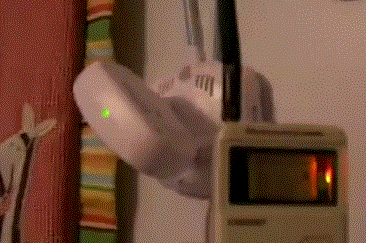What is DECT?

DECT, or Digital Enhanced Cordless Telecommunications, is a newer standard for home cordless telephones and baby monitors, imported from Europe. This model of cordless phone has not been around for a very long time. It is important to observe some key differences from older analog cordless phone models:
- Unlike older, analog models of cordless phones, DECT phones typically transmit at high powers (250mW) similar to mobile phones, and the power level does not adjust as certain mobile phones' power level does.
- Unlike older analog cordless phones, the base of DECT and some other digital cordless phones typically transmits non-stop, 24x7, the moment it is plugged in. It is a mini base station. (Some newer models of cordless phones such as the Siemens Gigaset Eco DECT, Plus version, now allow for transmitters to be turned off when there is no telephone call.)
- Unlike older analog cordless phones, DECT and other digital cordless phones transmit at high frequencies like 2.4 GHz and 5.8 GHz.
- DECT also involves pulsed radiation, which has been suspected to be more dangerous than non-pulsed radiation.

There are now warnings from Germany, Salzburg, Sweden, and Israel about the non-stop DECT cordless phones. One of the most recent countries advising precautions for cordless phones in 2010 is Israel.
Read the Government Advice on DECT cordless phones.
A Swiss study (May 2009) has shown that mobile phones, mobile phone base stations, and cordless phones were significant sources of microwave exposure in urban Switzerland.
The levels emitted by DECT cordless phone stations and Wi-Fi routers within the home range could potentially be more significant exposures than the levels typically received by mobile phone masts (cell towers) within the 300m range. (See Distance Matters.)
An epidemiological study by Leonnart Hardell shows brain tumor risks not only from cell phones, but also cordless phones.
Not all cordless phones are created equally. Some older, analog cordless phone models, stop radiating from the base when you click on the "end" button. However, DECT phones, with few exceptions, radiate from the base station all the time, even when no conversation is in progress. Moreover, different phones have different ranges. Experiments with the 8GHz Cornet RF meter, found very different power density levels (roughly 1x, 10x, and 100x) from different cordless phone brands.
A recent double-blind study published by Magda Havas showed that certain individuals have tachycardia (rapid heart rate) when a cordless phones base station is turned on, which stops almost immediately when turning it off.
Landline phones are not as common as they once were. While Walmart and Staples may still stock a few, they probably make up less than one tenth of the phones available. Most phones are now cordless phones following the DECT standard. You may have to search online at websites such as amazon.com or ebay.com to find an attractive landline phone, with speaker phone and optional headset jack.

